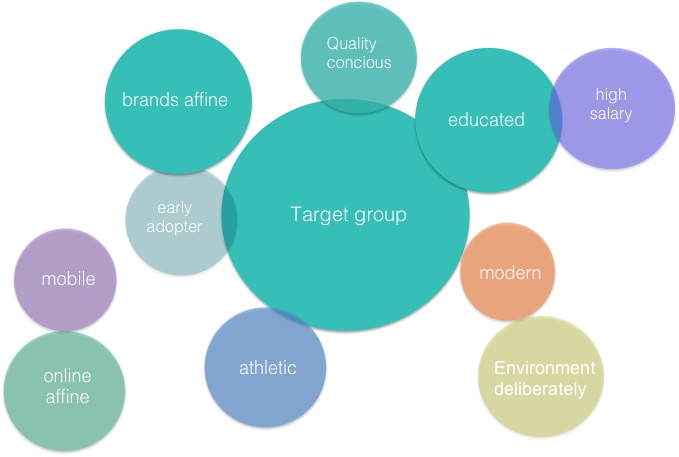Target Group Analysis
To successfully position your product on the market, it is important to know the buyers or potential buyers of your product. By this you can coordinate the right marketing measures to target your customers and trigger purchase decisions.
Examine your target group. The more precisely you can narrow down your target group, the less wasted your campaign will be.
How to define a Target Group
There is no uniform definition of a target group and a company may want to address several target groups.
For example, many companies know the sales figures of their own products, but do not know exactly how the buyer base of the products is composed. Other companies already have structural data on their buyer base, but do not know the composition of their prospective buyers, that is, the number of consumers who are interested in a product but do not necessarily buy it.
Target groups can be classified according to various characteristics, for example:
- Socio Demographics (e.g. age, gender, place of residence, education or income)
- Behaviour (e.g. purchase, repurchase or media use)
- Setting (e.g. risk averse, price sensitive, technical affine, early adopter or late adopter)

A target group can nevertheless be quite heterogeneous if several socio-demographic or psychographic characteristics coincide. For example, two people who have the same age, gender and income can be members of different political parties.
Prince Charles and Ozzy Osbourne are an example of the heterogeneity of a possible target group: both were born in 1948, are male, married, from England, have a very high income and love to keep dogs as pets. Probably the English aristocrat Prince Charles and the rock musician Ozzy Osbourne, however, have in addition to their similarities also major differences, which may influence their buying behaviour.
What are Buyer Personas?
Building buyer personas is a way to give a possibly heterogeneous, faceless target group a fictitious, but rather characteristic face. This concept makes it easier to understand the buyers of a product and to address them as accurately as possible.
A target group can consist of several buyer personas.
With the help of digitell.me BUYERPERSONAS, well-founded Buyer Personas can be formed. In addition to extensive closed queries, open queries are also used to gain valuable insights from all phases of the purchase decision and to incorporate them into the buyer personas.
Example of a B2C Buyer Persona

Eva Example
Background
- Female student
- Fitness Coach
- Studies: Sports and Nutrition
- Single
Demographics
- Female
- 20-25 years
- 15-20.000 EUR/year
- Lives in the city centre
Identification
- Extroverted appearance
- Loves healthy cuisine
- Regular sports activities
- Prefers communication via social media channels
Aims
- Successful completion of studies
- More requests as personal trainers
- Lives in the suburbs
Example of a B2B Buyer Persona

Max Smith
Background
- Director of Marketing
- Companies with 30-60 employees
- Studies: Marketing & Communication
- Married, 2 children
Demographics
- Male
- 30-45 years
- 70-100.000 EUR/year
- Lives in the suburbs
Identification
- Calm appearance
- Structured working method
- Likes sports
- Prefers communication via e-mail and telephone
Aims
- Reorientation of the marketing strategy of Print aud Social Media Campaigns
- Increase in sales and profit figures
- Increase in market share
